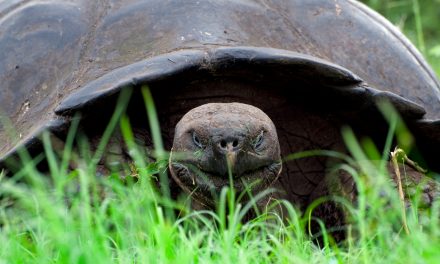Since ancient times, the power of animal symbols has been artfully woven into our cultures. People all over the planet have thought that connecting with certain animals can either be a good sign or a bad omen. The Egyptians, for example, believed that particular animals could protect their dead, guide their souls on their journey to the afterlife, ward off evil spirits, and bring good luck and prosperity.
From the Chinese Zodiac animals offering their power to each New Year to the revered animals of Hinduism, creatures as a sign of good luck can be found everywhere you turn.
Here are five animals lucky Nat Hab travelers can see on our global adventures.
1. Elephants
These gentle giants enjoy fame as a symbol of fortune and protection in both Buddhism and Hinduism. In Buddhism, a gray elephant symbolizes the untrained mind—agitated and potentially destructive. After practicing mindfulness, the mind can become controlled, strong and serene, at which time it will be represented by a white elephant. In the Hindu religion, Ganesh is a deity with a human body and an elephant head and is the remover of obstacles, especially at the start of an endeavor.
According to feng shui, an element of Chinese Taoism that uses energy forces to harmonize individuals with their environments, elephants attract abundance. Traditionally, any figurines of elephants placed in the house should have a trunk shaped like a trumpet, as it signifies fortune.

Mother and baby Asian elephants bathing in Borneo
The Asian elephant is the largest living land animal in Asia. Unluckily, it is considered endangered, with an estimated 25,000 to 33,000 left in the wild. Across the continent, the pace of human development has decimated elephant populations at an alarming rate. Asian elephants are even more endangered than their African cousins because their biggest threat to survival isn’t poaching but rather habitat loss.
Where to see elephants in the wild
On our Grand India Wildlife Adventure, we see Asian elephants up close in Kaziranga National Park. Nepal’s Chitwan National Park is also home to Asian elephants, and Sri Lanka boasts endemic Sri Lankan elephants, a larger subspecies of the Asian elephant. In Borneo, we scout for adorable pygmy elephants along the Kinabatangan River. And on our migration safaris in Kenya and Tanzania, we see an abundance of African savanna (or bush) elephants roaming the Maasai Mara and the Ngorongoro Crater. We also encounter plenty of African elephants in Botswana.
Any time we get to see an elephant mother with her kids in tow, slowly meandering toward the sunset, we don’t doubt that we’ve been blessed with some seriously good travel luck!
2. Tigers
In China, tigers are revered as the king of all beasts and are seen as a symbol of power and strength. These big cats are a symbol of courage and protection in India. And in Japan, they are said to offer luck and protection from evil spirits. As the largest of all cats, they have an undeniably powerful presence, so it’s not hard to see why some would think they offer protection.
The majestic tiger is also often depicted as being a vehicle of the gods. In Hinduism, the god Shiva is often shown riding on a tiger or with a tiger by his side. In Chinese mythology, the goddess Kwan Yin is often seen riding on a white tiger.

Nat Hab travelers spy a tree-hugging tiger on a wildlife safari in India © Surya Ramachandran
Where to see tigers in the wild
Ranthambore National Park in southeast Rajasthan is India’s top tiger safari destination. Our trip to one of India’s largest nature reserves (it covers 150 square miles) takes place in early summer when there are fewer tourists. Admittedly, it’s quite warm this time of year, but the heat prompts the tigers to poke their heads out of the dry underbrush to quench their thirst at least twice a day—and that is when we get really lucky and can capture great images of them.
Meanwhile, on our Grand India Wildlife Adventure, we visit Bandhavgarh National Park, which is renowned for having one of India’s highest concentrations of Bengal tigers. And though there is a much smaller population of Bengal tigers in Nepal than in India, we again have an opportunity to try to spot Bengal tigers in Chitwan National Park on our Wild & Ancient Himalaya Adventure.
Although wild tiger numbers are starting to rebound, there are still only about 4,500 tigers remaining in the wild. And in some regions, including much of Southeast Asia, tigers are still under threat and declining in number. When you travel with Nat Hab and our conservation partner World Wildlife Fund, you’re helping ensure a future for these amazing felines.
3. Beetles
Maybe they aren’t as showy as a prowling Bengal tiger or as instantly iconic as an elephant family walking through tall grass in the savanna, but in some traditions, the beetle is just as powerful of a creature.
In ancient Egypt, the most important amulet was the scarab, usually modeled after Scarabaeus sacer and revered by the Egyptians, who thought of these creatures as the embodiment of the sun god Khepri. Some say this beetle was symbolically as sacred to the Egyptians as the cross is to Christians. Images of scarabs were sewn into the wrappings of mummies to attract good fortune in this world and the next, as they were seen to symbolize rebirth and resurrection.

Giraffe-necked weevil spotted on a Nat Hab Madagascar safari © Richard de Gouveia
In North America and Europe, we have the iconic ladybug. It’s considered a lucky sign if one of these spotted red insects lands on you. European farmers used to call these bugs the “beetle of Our Lady” because they dedicated it to the Virgin Mary. Similarly, in Sanskrit, the ladybug’s name means “Indra’s shepherd,” as it was dedicated to the Hindu god Indra. Some Native American tribes thought the ladybug was a messenger from the spirit world that brought hope and guidance. And in a practical sense, gardeners certainly think of ladybugs as lucky, as these delightful insects eat aphids and other plant-eating pests.
Where to see beetles in the wild
But the showstopper is definitely the giraffe beetle from Madagascar, a large island off the east coast of Africa that broke away from the supercontinent some 100 million years ago. Its isolation from the continent means that more than 80% of the island nation’s rare and intriguing plants and animals exist nowhere else. The country’s giraffe beetle was only discovered in 2008.
As its name might suggest, the giraffe beetle has quite a long neck. The neck is three times longer in the male than the female of the species (Trachelophorus giraffe), as males use their necks in aggressive combat to fight for the right to a nearby female. For her part, the female will patiently await the outcome of the fight and even occasionally act as a referee before procreating with the lucky winner.
Cool fun fact: Dung beetles navigate via the Milky Way, the first known species recorded to do so in the animal kingdom!
4. Cranes
Cranes are nearly universally considered lucky. In Asia, particularly China and Japan, people view red-crowned cranes as fortunate because they’re linked to longevity and immortality, as they have been thought to live a thousand years. (The actual number is closer to 30 years in the wild, but let’s choose to ignore that for drama’s sake.)
The Japanese also believe that folding a thousand origami cranes brings good luck and a wish will come true. In Ancient Egypt, cranes were seen as symbols of protection and were often depicted on tombs and other monuments. In Ancient Greece, cranes were associated with the goddess Hera and were believed to bring good fortune to those who honored her.

A pair of lucky grey crowned cranes photographed on Nat Hab’s Ultimate Kenya & Tanzania Safari © Marybeth Coghill
The crane also has spiritual significance. In Hinduism, the crane is associated with Lord Shiva and is believed to bring good luck and prosperity, while in Christianity, the crane is seen as a symbol of resurrection and hope. Cranes are thought to bring good luck to relationships, as they mate and pair for life.
Where to see cranes in the wild
We often see elegant gray-crowned cranes on our Tanzania Migration Safari, their large wings denoting protection and shelter. Bring a special someone with you to watch the spectacular annual migrations and use a crane sighting as a good omen for the future of your relationship.
5. Frogs
Frogs are seen as lucky omens in many traditions because they are found near water, which is essential to survival. If you see a frog, it can often mean that rain is coming, symbolizing fertility and new beginnings. In some Native American traditions, frogs are even considered to be the keepers of rain. In feng shui, the money frog, also known as the three-legged toad, is a popular Chinese symbol used to attract wealth and prosperity.
This idea has made its way into popular culture as well. Just think of the Gran Madrid Casino, which opened a few years back (the first to open after Spain’s last casino closed 90 years ago when gambling was forbidden). Right outside the door, there is a bronze frog sculpture that measures a whopping 11.5 feet high, tall enough for gamblers to walk beneath the frog and hope its luck rubs off on them.

Monkey frog in the Amazon Rain Forest
Where to see frogs in the wild
On our Great Amazon River adventure, we have the chance to see many frog species, including ultra-colorful poison dart frogs. But a star of the show in the jungle when it comes to luck is the giant monkey frog, or Phyllomedusa bicolor. This frog secretes a substance known as kambo as a defense mechanism to kill or subdue animals that try to eat it. Indigenous people have applied kambo secretions on their bodies for centuries to heal and cleanse and ward off bad luck. This application, always done under the supervision of a shaman, is also believed to increase stamina and hunting skills.
You never need an excuse to join us on a Nat Hab adventure. But if you’re looking for one, focus on spotting one of these fortuitous creatures as a way of turning your luck around!



































